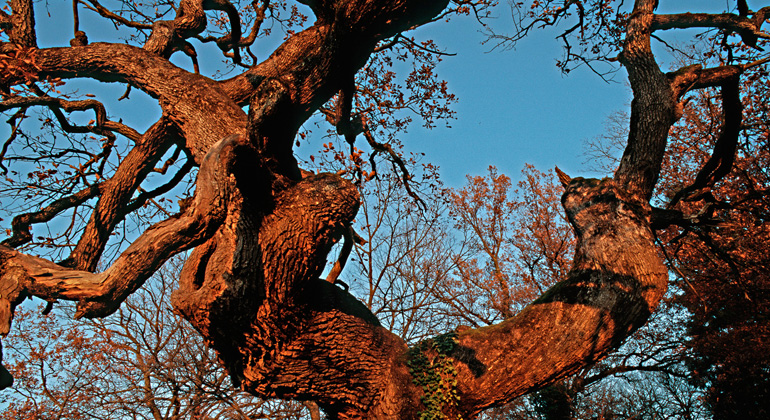Recent atmospheric drying across Europe unprecedented in the last 400 years
The atmosphere across Europe has become markedly drier in recent decades compared to pre-industrial times due to greenhouse gas emissions.
This is reported by an international tree-ring study led by the Swiss Federal Institute for Forest, Snow and Landscape Research WSL. A drier atmosphere may exacerbate hydrological and agricultural droughts and wildfire risk.
The investigated tree-ring data reach back to the year 1600. They indicate that since the beginning of the 21st century, the air over large parts of Europe has become drier compared to any previous period – and this trend continues. Given the drought events in many regions of Europe in recent years, this finding is really concerning, says Kerstin Treydte, lead author of the study in ‘Nature Geoscience’ and a WSL researcher.
Vapor pressure deficit (VPD) is used to measure air dryness. It describes the difference between the actual and the maximum possible water content of the air, i.e., the air’s “thirst for water”. Thirsty air – that is when VPD is high – draws more water from soils and plants, reduces vegetation growth and can even lead to tree death. Desiccated vegetation and soils further enhance the risk of wildfires. It is known that VPD increases in a warming climate, but uncertainties are still large across regions regarding the magnitude of long-term changes back to pre-industrial times without human influence.
Variants of atoms in water and tree rings
For the first time, Treydte reconstructed changes in VPD across Europe over the past 400 years. To do so, she collaborated with 67 international researchers to compile oxygen isotope data in tree rings from various European regions into a large network. Isotopes are variants of an atom with different weights that are assimilated during water uptake by the roots and modified during transpiration in the leaves. Their proportion varies from one tree ring to another (see box).

Recent air drying is human-induced and strongest in Central Europe
Using model simulations, the authors performed tests of the results from the tree-ring data. The simulations indicate that 21st century VPD is exceptionally high compared to pre-industrial times. Even more, they demonstrate that today’s VPD levels could not have been reached without greenhouse gas emissions, i.e., the human influence is obvious. Furthermore, the combination of tree-ring data, model simulations and direct measurements also elucidate regional differences: In Northern Europe, the water thirst of the air relative to pre-industrial times has increased the least compared to other European regions because the air is cooler and can take up less water. In the Central European lowlands and in the Alps and Pyrenees the VPD increase is particularly strong, with highest values in the drought years 2003, 2015 and 2018.
Consequences for forests and agriculture
A further increase in VPD poses a long-term threat to many vital ecosystem functions. “VPD is particularly important for agriculture because the higher it is, the greater the water demand of crops. More irrigation is necessary and crop yields decrease. In forests, wood supply and carbon sequestration are at risk, leading to uncertainties regarding climate regulation and carbon storage of these ecosystems in the future”, says Treydte. This is of particular concern in the densely populated regions of Europe and adds to the urgent need of reducing emissions and adapting to climate change. “Our findings will help to refine simulations of future climate scenarios and to assess the threat posed by high VPD levels to ecosystems, the economy and society,” says Treydte.
Oxygen isotopes in tree rings report about past climate
Isotopes are variants of an atom of different weights naturally occurring in the environment. Water for example contains light and heavy variants of oxygen atoms. Trees assimilate it through their roots, release part of it back into the air through their leaves and use the remaining part to build new cells, e.g., in wood. The ratio of light to heavy isotopes undergoes changes from soil water to wood formation. These changes are largely controlled by VPD. Thus, oxygen isotopes in tree rings contain information about past and present air dryness.
- „Recent human-induced atmospheric drying across Europe unprecedented in the last 400 years“ DOI 10.1038/s41561-023-01335-8, nature.com/articles/s41561-023-01335-8
QUELLE
Eidg. Forschungsanstalt für Wald, Schnee und Landschaft WSL 2023








